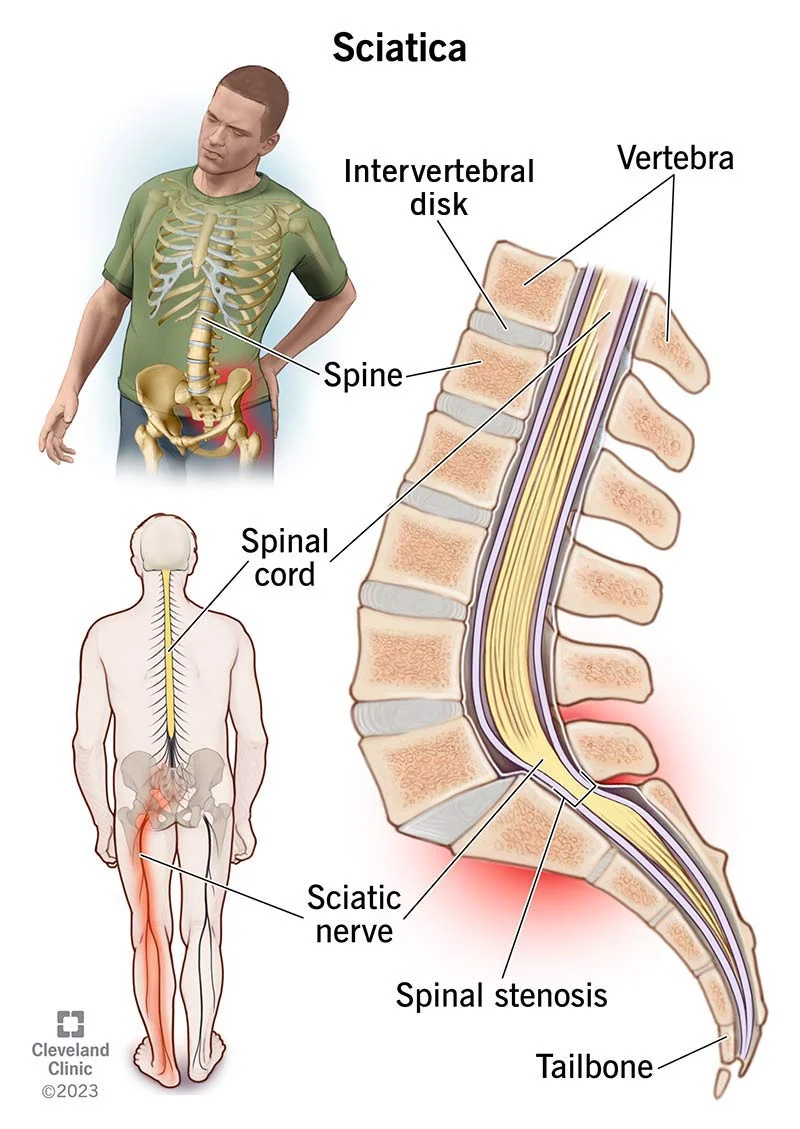Ayurveda Therapy for Sciatica

Ayurveda and remedial massage can be valuable forms of support for individuals dealing with sciatica, a painful condition caused by the compression or irritation of the sciatic nerve. Here’s how each approach can help:
Ayurveda:
- Customized Herbal Remedies: Ayurveda takes a holistic approach to health, aiming to balance the body and mind. Ayurvedic practitioners can recommend specific herbal remedies and dietary changes to reduce inflammation and address the root cause of sciatica.
- Yoga and Exercise: Ayurveda often incorporates yoga and gentle exercises tailored to the individual’s constitution and condition. Certain yoga poses can provide relief by stretching and strengthening the lower back and leg muscles while promoting flexibility and relaxation.
- Dietary Guidance: Ayurveda emphasizes the importance of diet in managing health. Ayurvedic dietary principles can help reduce inflammation and improve digestion, which can indirectly alleviate sciatica symptoms.
- Meditation and Stress Reduction: Stress can exacerbate sciatica pain. Ayurveda incorporates mindfulness techniques and meditation to reduce stress levels, helping to manage pain more effectively.
Remedial Massage:
- Pain Relief: Remedial massage therapists can target the specific muscles and areas contributing to sciatica pain. By applying appropriate pressure and techniques, they can help alleviate muscle tension and reduce pain.
- Muscle Relaxation: Sciatica is often associated with muscle tightness and spasms. Remedial massage can relax these muscles, improving flexibility and range of motion in the affected area.
- Improved Circulation: Massage increases blood flow to the affected area, which can aid in the healing process. Better circulation helps deliver nutrients to damaged tissues and flush out toxins, promoting recovery.
- Postural Correction: Remedial massage can address posture-related issues that may contribute to sciatica. By releasing tension in muscles and promoting better alignment, it can help prevent future episodes of sciatica.
- Nerve Impingement: In some cases, sciatica is caused by pressure on the sciatic nerve due to muscle or tissue compression. Remedial massage can help relieve this pressure by relaxing the surrounding muscles.
- Stress Reduction: Just like in Ayurveda, remedial massage can help reduce stress and anxiety, which can exacerbate sciatica symptoms.
Combining Ayurveda and Remedial Massage:
Integrating Ayurvedic principles with remedial massage can provide comprehensive support for individuals with sciatica. Ayurveda can address the underlying imbalances in the body that contribute to sciatica, while remedial massage can provide immediate pain relief and muscle relaxation. This holistic approach can enhance the effectiveness of treatment and promote long-term well-being.
It’s essential to consult with qualified practitioners in both Ayurveda and remedial massage to create a personalized treatment plan tailored to your specific condition and needs. Additionally, it’s advisable to consult with a healthcare professional to ensure that these therapies are suitable and safe for your particular case of sciatica.
